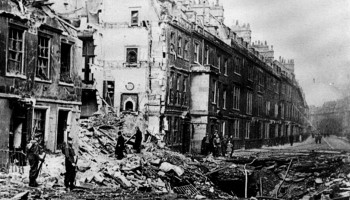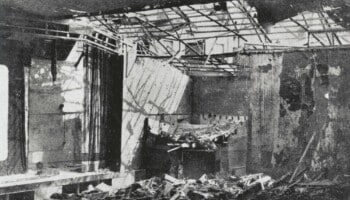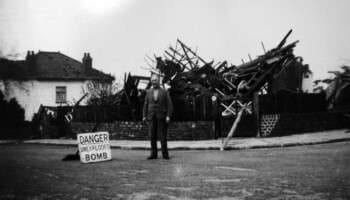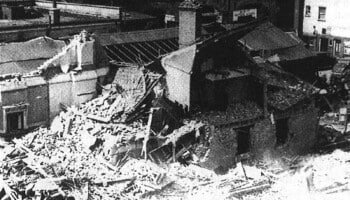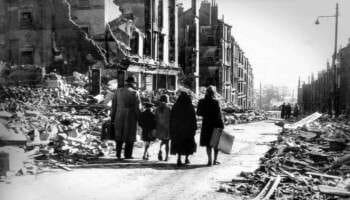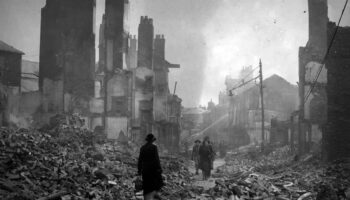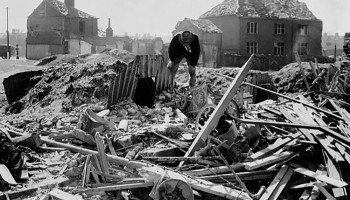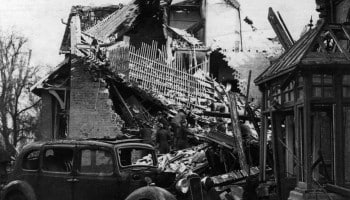Home » Resources » UXO City Guides »
UXO City Guide
Home Office Bombing Statistics for Belfast
Record of German Ordnance dropped on the County Borough of Belfast
High Explosive Bombs (All types)
525
Parachute Mines
48
Oil Bombs
0
Phosphorus Bombs
0
Fire Pots
0
Pilotless Aircraft (V-1)
0
Long-range Rocket Bombs (V-2)
0
Weapons Total
573
Area Acreage
1,586
Number of items per 1,000 acres
37.5
Why was Belfast targeted and bombed in WWII?
During WWII, Belfast was a key British port connected to the Atlantic, home to significant industries which posed as potential bombing targets for the Luftwaffe. These included shipbuilding works, dockyards, and aircraft factories along the River Lagan, as well as the production of linen, flour and tobacco. Whilst attacks on Belfast were initially unprecedented given its distance from the European mainland, the Luftwaffe still considered its infrastructure to be of great enough importance to raid.
The most notable industries attacked by the Luftwaffe include the Harland & Wolff shipyards and the Short & Harland aircraft factory, both of which were involved in the production of military vehicles. These included Royal Navy cruisers and aircraft carriers, and Royal Air Force seaplanes and bombers, which directly contributed to Britain’s military power during WWII.
Home Office Bombing Statistics for Belfast
Details obtained from the official Home Office bombing statistics, highlights the volume and type of bombs that fell on County Borough of Belfast throughout WWII. A total of 573 recorded bombs fell on Belfast, equating to 37.5 items of ordnance per 1,000 acres.
The bombing records that survive for Belfast are varied, with several bomb maps and written records being available acquired from the Public Record Office of Northern Ireland, online efforts to document the Belfast Blitz and information found at the Titanic Quarter.
Records of bombing across the city are available, although are not always considered to be comprehensive. The Harland & Wolff shipyards and Short & Harland aeroplane factory both have their own extensive records and bomb maps which provide a detailed insight.
Major bombing raids in Belfast
Belfast suffered a total of four notable air raids during WWII. Historical accounts suggest that Belfast was relatively unprepared and undefended during the earlier stages of WWII, and that Luftwaffe raids were unexpected. This was likely due to an illusion of safety provided by the city’s considerable distance from occupied Europe, where German bomber bases were situated. Belfast avoided any air raids throughout 1940; the year in which the bulk of bombing on Britain occurred, initially suggesting that Belfast may not be targeted. At the start of 1941, only four public air raid shelters existed in the city, made of sandbags around the city hall. The city also lacked barrage balloons or any fighter squadrons for home defence of airspace.
On the night of the 7-8th April 1941, Belfast’s sense of security came to an abrupt end when an attack came from the Luftwaffe focused upon Belfast’s docks. It involved six Heinkel HE 111 bombers. Strikes were concentrated on the Harland & Wolff shipyards, although also struck some neighbouring residential areas. The raid caused limited damage and few casualties, but highlighted the city’s lack of defensive measures.
Following the first raid, which is speculated to have been carried out to assess the city’s defences, a major raid was being planned. On Easter Tuesday; on the 15th of April 1941, approximately 150 enemy bombers attacked the city, forming the largest and most-devastating raid on the city. Targets included Belfast’s water works and power station, and several of Harland & Wolff’s dry docks containing vessels. Numerous public buildings and residential areas were also attacked and damaged including Belfast City Hall, York Road railway station and many streets in the city centre – including the High Street.
The raid resulted in a total of 750 bombs and 29,000 incendiaries being dropped, including 203 tonnes of high explosives. The city did little to defend itself, with anti-aircraft defences holding fire in the mistaken belief that RAF fighters might be damaged. It resulted in approximately 55,000 houses being damaged and approximately 600-700 civilian deaths; the greatest loss of life in a night raid outside of London during the Blitz.
Another large raid on Belfast occurred on the 4-5th May 1941. Luftwaffe bombers again concentrated bombing upon Harland & Wolff shipyards at Queen’s Island; today known as the Titanic Quarter. Some residential areas of east Belfast were also hit, as well as parts of the north and centre. Local firefighting capabilities were stretched due to a low tide and damage to water works from the previous raid.
Approximately 800 canisters containing 96,000 incendiary bombs were dropped, giving this raid its name as the Fire Raid. Casualties were fewer than the Easter Tuesday raid due to the pre-emptive sounding of air raid sirens and greater caution from the Luftwaffe.
A final raid on Belfast occurred on the 5-6th May 1941. However, this raid’s effect was limited and casualties few, as many of the city’s residents had evacuated. The physical effects of the Belfast Blitz were significant, with over 1,300 houses being demolished, another 5,000 badly damaged and nearly 30,000 left slightly damaged. It is believed that as many as 50% of the city’s houses were affected and around 1,000 people were killed.
Can UXO still pose a risk to construction projects in Belfast?
The primary potential risk from UXO in Belfast is from items of German air-delivered ordnance which failed to function as designed. Approximately 10% of munitions deployed during across the UK during WWII failed to detonate, and whilst efforts were made during, and after the war to locate and make UXBs safe, not all items were discovered. This is evidenced by the regular, on-going discoveries of UXO during construction-related intrusive ground works across the UK – not just in Belfast.
It is known that explosive ordnance contamination did take place in areas of Belfast during the period of The Troubles from the late 1960’s to 1990’s. However, it is unlikely that significant amounts of ordnance will have contaminated the majority of ground in the city a result of this legacy, although the use of ordnance in this period is still worth considering.
I am about to start a project in Belfast, what should I do?
Developers and ground workers should consider this potential before intrusive works are planned, through either a Preliminary UXO Risk Assessment or Detailed UXO Risk Assessment. This is the first stage in our UXO risk mitigation strategy and should be undertaken as early in a project lifecycle as possible in accordance with CIRIA C681 guidelines.
It is important that where a viable risk is identified, it is effectively and appropriately mitigated to reduce the risk to as low as reasonably practicable (ALARP). However, it is equally important that UXO risk mitigation measures are not implemented when they are not needed.
While there is certainly potential to encounter UXO during construction projects in Belfast, it does not mean that UXO will pose a risk to all projects. Just because a site is located in Belfast does not mean there is automatically a ‘high’ risk of encountering UXO. It really does depend on the specific location of the site being developed.
A well-researched UXO Risk Assessment will take into account location specific factors – was the actual site footprint affected by bombing, what damage was sustained, what was the site used for, how much would it have been accessed, what were the ground conditions present etc.
It should also consider what has happened post-war – how much development has occurred, to what depths have excavations taken place and so on. This will allow an assessment of the likelihood that UXO could have fallen on site, gone unnoticed and potentially still remain in situ.
Recent UXO discoveries in Belfast
Since the war, many items of UXO have been discovered across multiple cities within the UK, with Belfast no exception. See the news articles below about UXO incidents and discoveries from national and local press in Belfast.
1st Line Defence keep up-to-date with relevant and noteworthy UXO-related news stories reported across the UK, and you can browse through these articles using the buttons below.
Press articles 2025 Press articles 2024
Get UXO risk mitigation services from a partner you can trust
UXO City Guides
Got a project in Belfast? Need advice but not sure where to start?
If you need general advice about UXO risk mitigation in Belfast, contact us and we will be happy to help.
Contact Us
* indicates required fields







